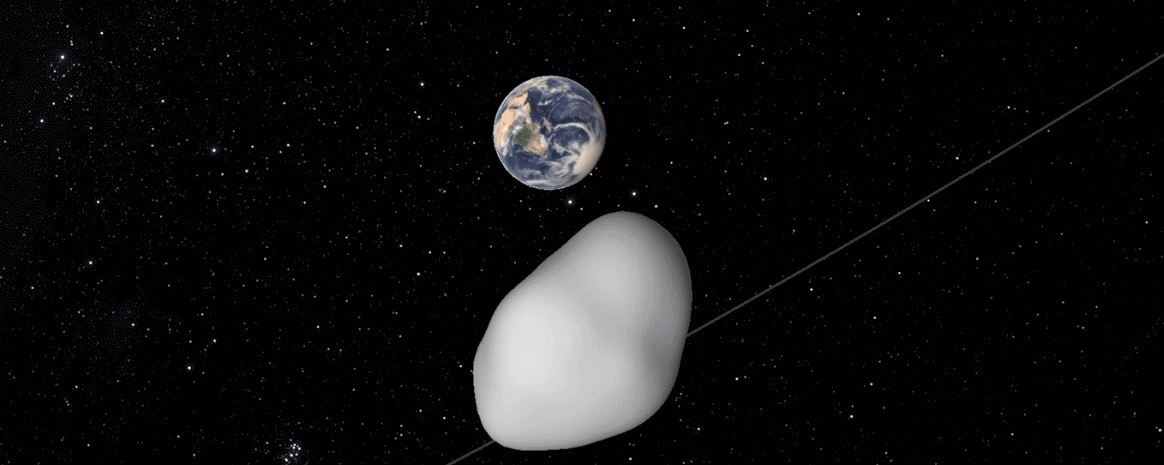An asteroid the size of a school bus came perilously close to Earth, which put the global planetary defense systems to the test.
Asteroid 2012 TC4 whizzed by at 44,000 km (27,000 miles) at a speed of 30,000 miles per hour, coming well inside the orbit of the moon and other man-made satellites circling the Earth, Reuters reports.
There was no actual risk of the asteroid hitting home, but it did provide scientists with the opportunity to test NASA’s planetary defense systems. Michael Kelly, from NASA’s Planetary Defense Coordination Office, said, “Asteroid trackers are using this flyby to test the worldwide asteroid detection and tracking network, assessing our capability to work together in response to finding a potential real asteroid-impact threat.”
Europe agrees. Detlef Koschny of the European Space Agency said, “Basically, we pretended that this is a ‘critical’ object with a high risk of impacting Earth…and exercised our communication channels and used telescopes and radar systems for observations.”
The results turned out to be a mix of both good and bad. Koschny said that one big radar system located in Puerto Rico was too damaged by Hurricane Maria to work, so another radar system was used. He explained,
This is exactly why we do this exercise – to not be surprised by these things.
The asteroid appeared to be 10 to 12 meters wide, around the same size as the asteroid that blew up over Chelyabinsk, Russia in 2013.
Earth’s global network is made up of volunteer astronomers who monitor specific aspects of the asteroid, such as density, trajectory and size, and communicate with other teams around the world.
Paul Chodas, manager of the Center for Near-Earth Object Studies (CNEOS) at NASA’s Jet Propulsion Laboratory, told Newsweek, “When monitoring an asteroid on a collision course with Earth, we would want to know these things to assess the impact site and potential damage.”
While 2012 TC4 is not an immediate threat, NASA and the world’s space agencies are preparing for bigger collisions that might cause catastrophic damage, such as the Chelyabinsk asteroid that left over a thousand people injured by flying debris.
























